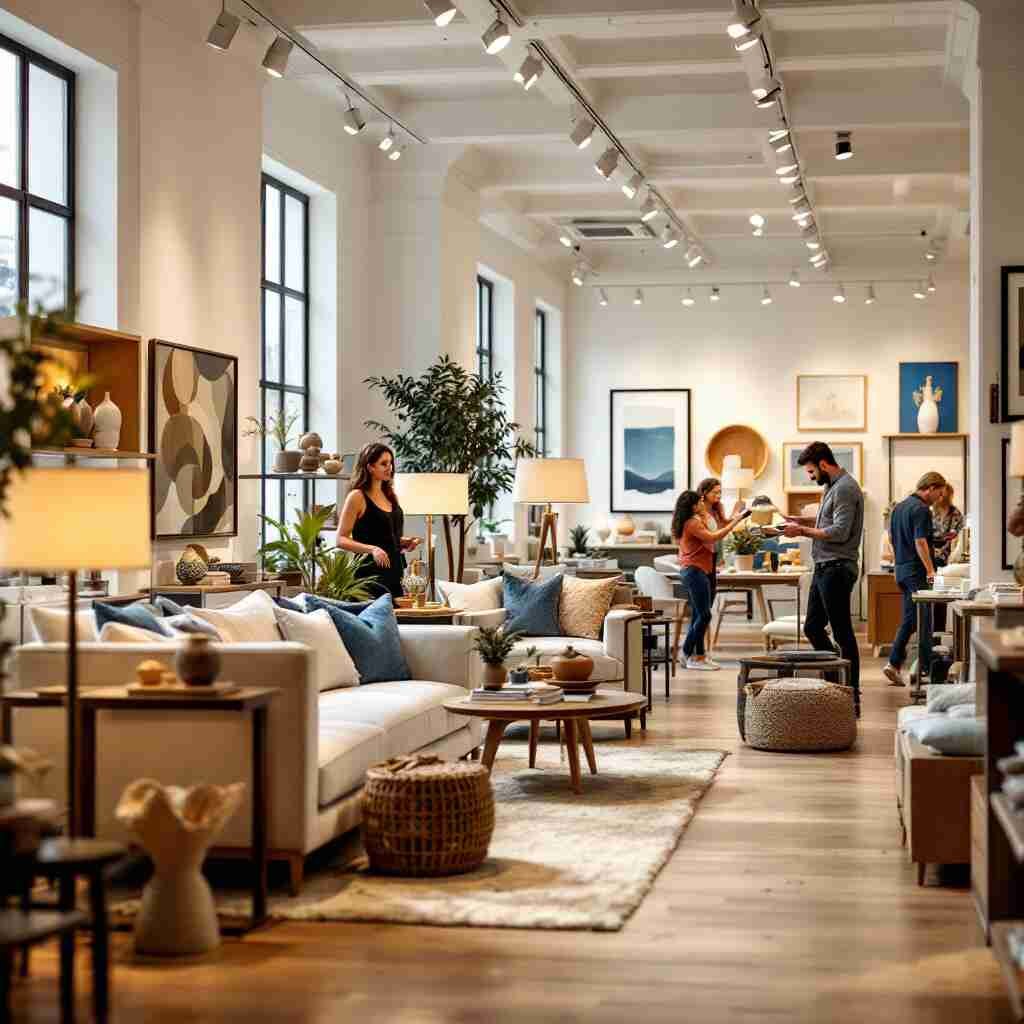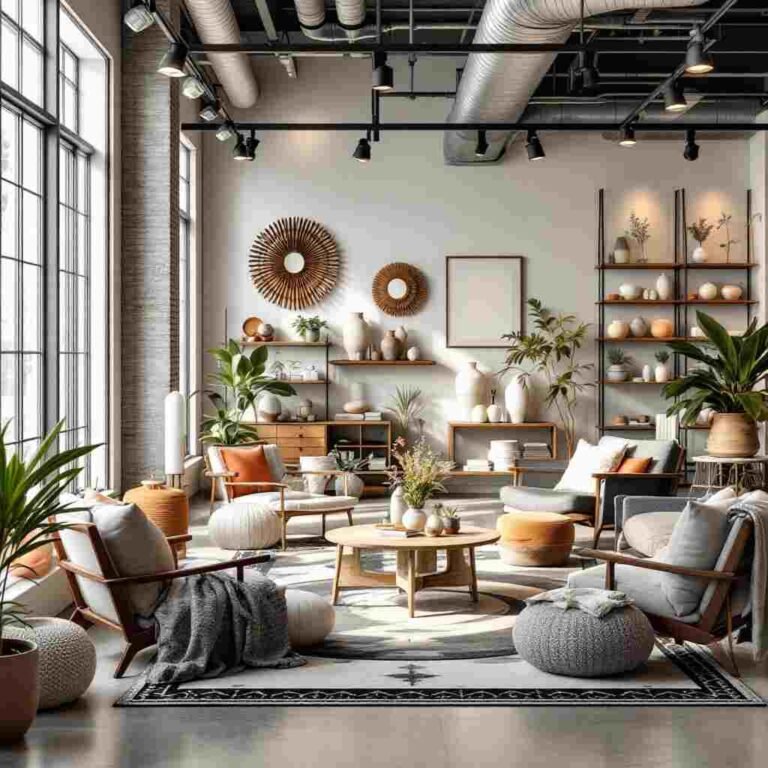The global home decor market is on a remarkable growth trajectory, projected to exceed $1 trillion by 2030. But with such growth comes competition, and finding your niche in this thriving industry requires a blend of creativity, business acumen, and strategic planning. Whether you’re envisioning an online store, a physical brick-and-mortar shop, or a hybrid model.
From conducting market research to creating a standout inventory, we’ll cover the essentials to help you launch a business that stands out in a competitive landscape. Let’s dive in!
Market Research and Niche Selection
Finding Your Place in the Home Decor Market
Before you dive into starting your home decor store, market research is essential. Understanding the industry, your competitors, and your target audience will give you a solid foundation to build.
Competitor Analysis
Start by analyzing your competition. Use tools like SEMrush, Google Trends, and Ahrefs to study:
- What products do your competitors sell?
- Their pricing strategies.
- How they market their store.
This will help you identify gaps or opportunities in the market.
Define Your Target Audience
Who are you selling to? Define your ideal customer based on the following:
- Demographics: Age, income, gender, location.
- Interests: Minimalist design, vintage vibes, or luxury decor.
- Pain Points: What problems does your decor solve? For example, offering sustainable options for eco-conscious buyers.
Use tools like SurveyMonkey or host focus groups to gather insights.
Choosing the Right Niche
The home decor market is vast, so narrowing your focus helps differentiate your business. Here are a few niche ideas:
- Sustainable/organic decor: Products made from eco-friendly materials.
- Vintage or antique furniture: Timeless pieces with character.
- Smart home decor: Tech-integrated decor for modern homes.
- Cultural or regional themes: Unique products inspired by specific cultures or regions.
Local vs. Online Demand
Decide whether to focus on local customers through a physical store or cater to the eCommerce audience. Research foot traffic in potential store locations and analyze online trends with tools like Pinterest Trends to see what’s trending.
Business Planning Essentials
Crafting a Winning Business Plan
A solid business plan acts as your blueprint for success. It outlines your vision, goals, and strategies for execution.
You may also read (house is decorated with five things)
Financial Projections
Determine how much money you’ll need to start your store and keep it running. Outline:
- Initial investment costs (inventory, store setup, website development).
- Monthly expenses (rent, marketing, salaries).
- Expected revenue.
Tools like LivePlan or QuickBooks can help you create detailed budgets and projections.
Legal Considerations
Register your business and ensure compliance with local regulations. Key steps include:
- Choosing a business structure: LLC, sole proprietorship, or corporation.
- Obtaining necessary permits and licenses.
- Registering for taxes and acquiring an EIN (Employer Identification Number).
SWOT Analysis
A SWOT analysis (Strengths, Weaknesses, Opportunities, Threats) is crucial for identifying your business’s potential. For example, your strength might be a unique niche, while growing competition could be a potential threat.
Securing Funding
Starting a home decor store can be capital-intensive. Explore funding options such as:
- Small business loans: Approach banks or credit unions.
- Crowdfunding: Launch a campaign on platforms like Kickstarter.
- Private investors: Partner with individuals who believe in your vision.
Sourcing Products and Suppliers
Building a Standout Inventory
Your product selection is the heart of your home decor store. Customers will return if your unique, high-quality inventory meets their needs.
Types of Suppliers
You can source products from:
- Wholesalers: This option offers bulk discounts and consistent supply.
- Artisans: Collaborate with local artists or artisans for one-of-a-kind items.
- Dropshipping: Use platforms like Printify or Oberlo to sell without holding inventory.
Quality Control
Always vet your suppliers. Request samples before committing to the product ensure that it meets your standards.
Staying Ahead of Trends
Use tools like Pinterest Trends or Instagram Insights to predict what’s trending in home decor. For example, there’s been a consistent rise in demand for bohemian styles and natural materials.
Pricing Strategy
Your pricing should strike a balance between profitability and customer appeal. Consider:
- Competitor-based pricing: Match or slightly undercut competitors.
- Value-based pricing: Charge based on the perceived value of the product.
Store Setup: Physical vs. Online
Choosing Your Storefront: Digital, Physical, or Both?
Whether setting up an online store, a physical shop, or both, your storefront plays a huge role in customer experience.
Brick-and-Mortar Store
- Location Selection: Choose a location with high foot traffic. Negotiate lease terms to reduce your upfront costs.
- Store Layout: Think about flow and functionality. Use visual merchandising techniques to create attractive displays.
- POS Systems: Invest in a point-of-sale (POS) system that integrates inventory and customer relationship management (CRM).
eCommerce Store
- Platform Selection: Compare platforms like Shopify, WooCommerce, or Etsy based on your needs.
- SEO Optimization: Use tools like Ahrefs to optimize your website for keywords like “buy home decor online.”
- Product Photography: Great photos sell products. Invest in good lighting and editing tools.
- Payment Gateways: Offer options like PayPal, Stripe, and local alternatives.
Marketing and Branding Strategies
Attracting Customers to Your Home Decor Store
Once your store is set up, it’s time to bring in customers. A combination of digital and offline marketing strategies works best.
Build a Memorable Brand
Your brand is more than just a logo; it’s your store’s personality. Focus on:
- Logo design: Keep it simple and memorable.
- Color palette: Use colors that evoke emotion (e.g., calming blues, earthy greens).
- Brand voice: Your tone should resonate with your audience.
Digital Marketing
- Social Media: Platforms like Instagram and Pinterest are ideal for showcasing visually appealing decor.
- Email Campaigns: Send newsletters, exclusive discounts, and abandoned cart sequences.
- Content Marketing: Start a blog featuring home decor tips and trends.
Local Outreach
- Collaborate with local interior designers for partnerships.
- Host DIY workshops or community events to build relationships.
Operations and Growth
Streamlining Daily Operations
To keep your business running smoothly, focus on operations and scalability.
Inventory Management
Inventory software like Zoho Inventory can track stock levels and avoid overstocking.
Customer Service
Good service keeps customers coming back. Offer:
- Easy returns and exchanges.
- Prompt responses to inquiries.
Scaling Your Business
Expand by:
- Adding complementary product lines.
- Exploring franchising opportunities.
Avoiding Common Pitfalls
Mistakes to Avoid When Starting a Home Decor Store
- Overstocking: Start small to avoid tying up capital in unsold inventory.
- Poor Pricing: Constantly review and adjust your strategy based on market trends.
- Ignoring SEO: Invest in organic traffic by optimizing for relevant keywords.
